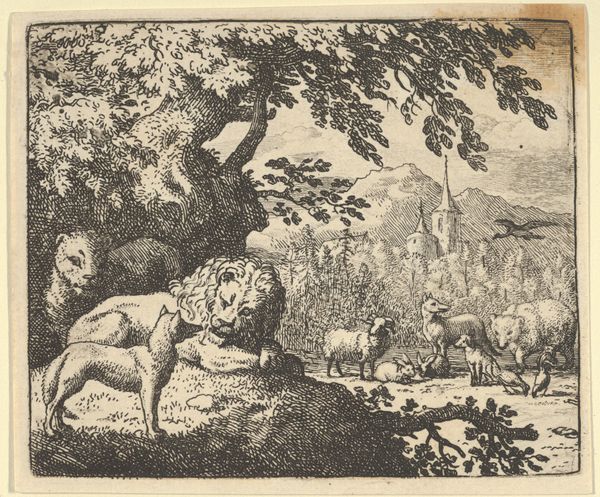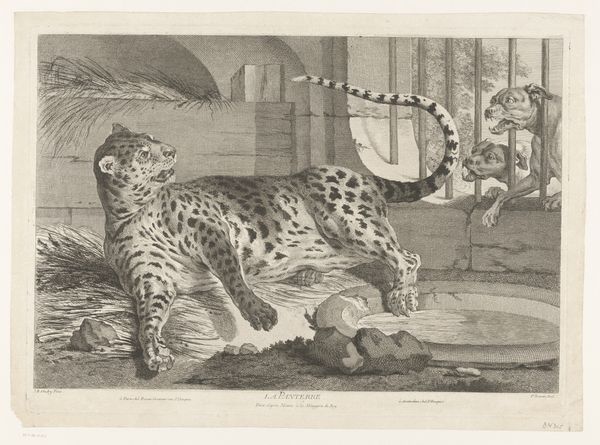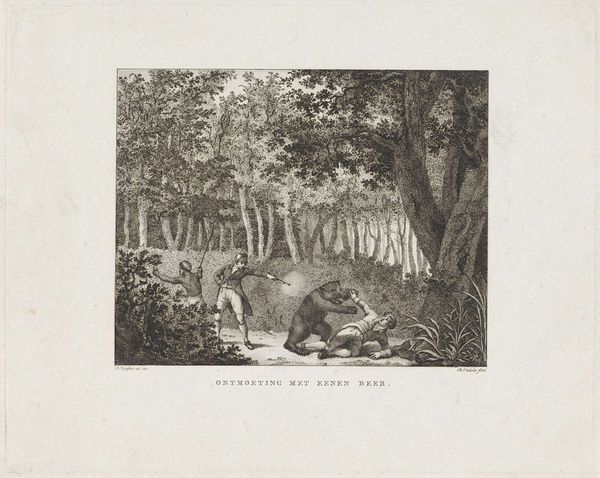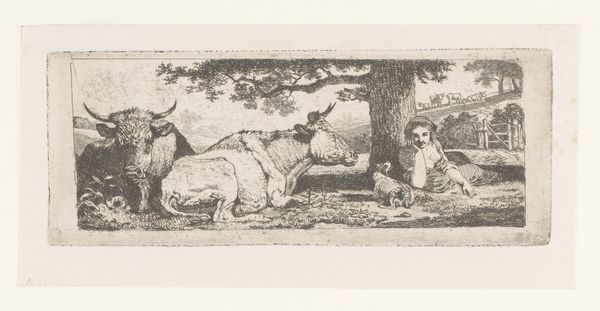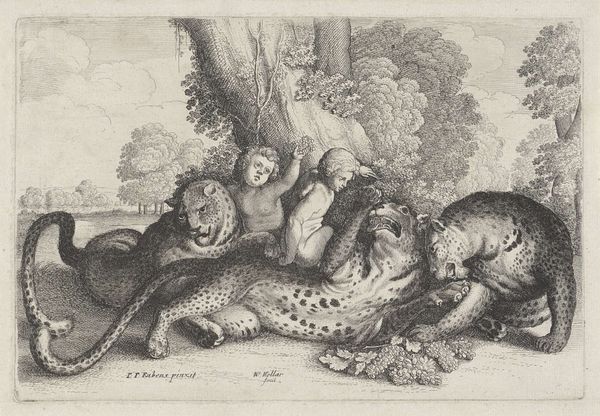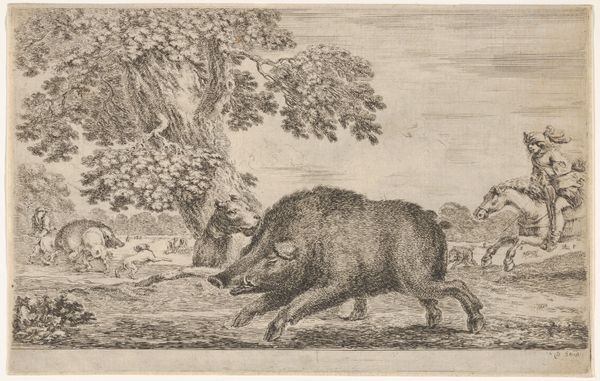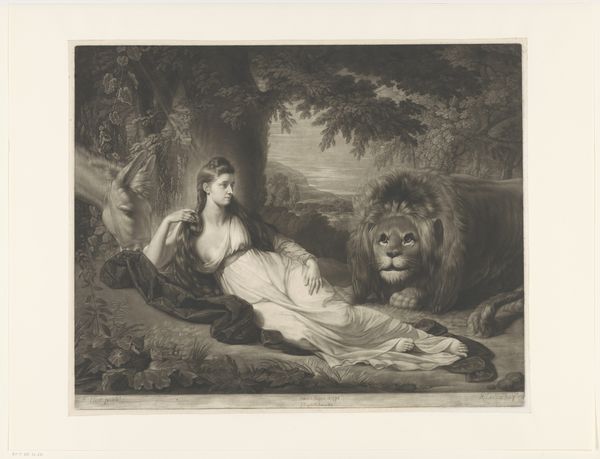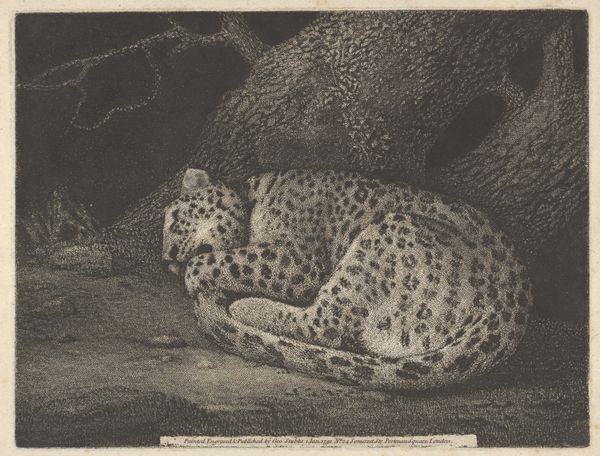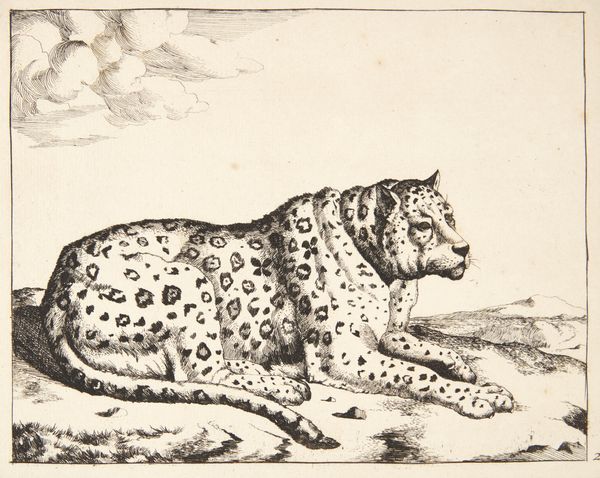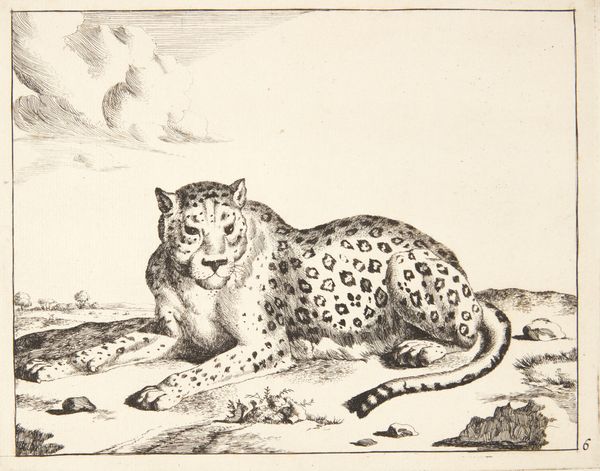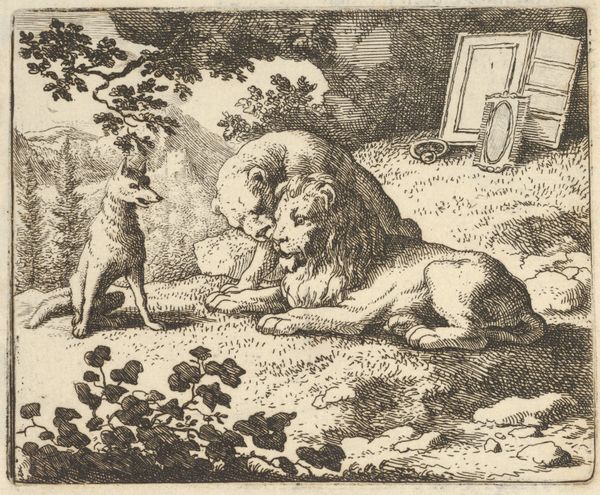
drawing, print, engraving
#
drawing
#
neoclacissism
#
animal
# print
#
landscape
#
england
#
engraving
#
realism
Dimensions: 10 x 13 in. (25.4 x 33.0 cm)
Copyright: Public Domain
George Stubbs made this print called, *A Tyger*, using etching and engraving, media highly popular in 18th century Britain. Stubbs was known for his detailed and accurate depictions of animals, and this print of a resting leopard is no exception. But let’s ask, what were the cultural associations of big cats at this time? For an expanding empire, animals like this one evoked the exoticism of far-flung lands. This wasn’t only a matter of aesthetics, though. Images of powerful animals can be seen as standing in for imperial domination, naturalizing it as part of the order of things. Stubbs was closely associated with elite institutions like the Royal Academy. His art reflects a tension between scientific observation and the aesthetic norms of his day, hinting at the complex ways that art can both reflect and shape our understanding of the world. By consulting historical archives and studying the artistic conventions of the period, we can gain deeper insights into the complex social and political meanings embedded within this image.
Comments
No comments
Be the first to comment and join the conversation on the ultimate creative platform.
